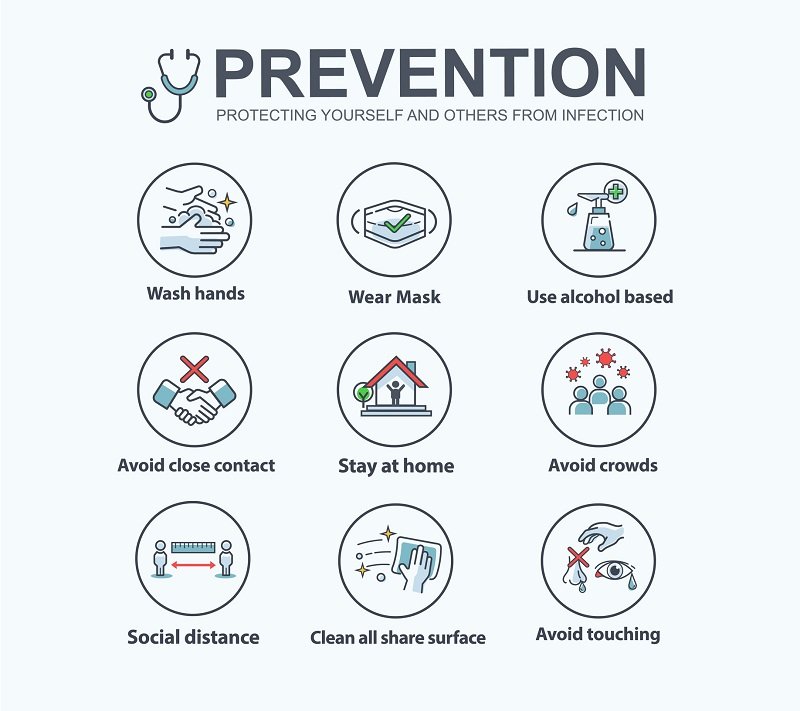How to Handle Covid-19 Concerns at Work
Editor’s Note: This blog was last updated on December 9th 2020. Our creative team has developed 20 short videos about COVID-19 that are themed around returning to work. Click here to view the blog post where you can download the videos and see how you can use them to safely reopen and communicate with customers and staff.
COVID-19, which is referred to by many as “the corona virus” (note: there are many corona viruses) is an upper-respiratory disease. Currently, COVId-19 has infected at least 68.4 million people and killed more than 1.5 million people globably.
The rapidly changing information about the virus creates worry, chaos and a lot of uncertainties that affect the workplace. While previously isolated to pockets of individuals with known international connections, the virus is now propagating domestically, something that public-health experts call “community spread.”
To combat the threat of the outbreak and provide some assurance, it’s critical that organizations create an internal communication plan. The goal is to create an open dialogue with employees – to help them understand how their work environment is being affected, to combat the negative emotions in connection with the virus, and to help employees understand what is being done to ensure their well being. What is most important is employees health during this pandemic and how to lower the spread of COVID-19.
 Here are 4 action items to include in your communication plan, and steps to take to create a healthier work environment.
Here are 4 action items to include in your communication plan, and steps to take to create a healthier work environment.
1. Acknowledge COVID-19
The virus is not a secret and your employees are aware of it and probably concerned about testing positive. Sending out official communication via email or on your digital displays in the office to formally acknowledge it is the first step in the right direction. There is a lot of misinformation out there about COVID-19, so find trusted sources and share them with your employees at work.
The Centers for Disease Control and Prevention (CDC) and the World Health Organization (WHO) have verified and accurate COVID-19 information and prevention advice. Include these as resources in your communications at work.
Create fact sheets to display on your workplace digital signage screens to increase the reach of your messaging and improve retention. Email may be read once or twice, but digital signage is easily accessible and highly visible, which means the information displayed on the screens will be easier to remember. Digital signage is also a touch-less option which is great for preventing the spread of COVID-19.
Our team created fact sheets that you can easily display for your employees. Feel free to download the editable slides at the bottom of this blog.
 2. Encourage regular hand-washing and using hand sanitizer
2. Encourage regular hand-washing and using hand sanitizer
Since news of the virus broke, I have been washing my hands like I’m a surgeon (countless hours of watching Grey’s Anatomy are finally paying off). Remind your employees to wash their hands often. As well as, avoid touching their mouth, eyes or nose to prevent the spread of the disease. Furthermore, you can provide your employees with hand sanitizer stations in the office.
The CDC published guidelines on how and when to wash your hands – lathering and rubbing the backs of the hands, between your fingers and under your nails for 20 seconds. If you need a timer, a simple one is to hum the “Happy Birthday” song twice from beginning to end.
Remind your employees to wash their hands and use hand sanitize while at work to limit the spread of COVID-19. This will reinforce this habit, place hand-washing reminders around your facility, and make sure your hand sanitizer and soap dispensers are stocked and paper towels are available.
3. Actively encourage wearing masks and offer employees the option to work from home
There are two main principles here:
- make sure your employees wear a facemask
- give your employees the option to work from home if they are not feeling well
The CDC also strongly recommends that employees stay home if they are sick. Symptoms of the virus include fever, coughing, respiratory problems and shortness of breath. Often, we have employees who will soldier on through sickness in order to meet deadlines. Or, to avoid being overwhelmed by a backlog of work. Now is the time to discourage that behavior and instead actively encourage sick employees to stay home.
 Health professionals recommend that sick employees stay home and not come to work until they are free of fever, signs of a fever and any other symptoms for at least 24 hours, without the use of fever-reducing or other symptom-altering medicines.
Health professionals recommend that sick employees stay home and not come to work until they are free of fever, signs of a fever and any other symptoms for at least 24 hours, without the use of fever-reducing or other symptom-altering medicines.
Employers need to ensure that the sick leave policy is flexible and consistent with public health guidance. They should also ensure that employees are well aware of these policies.
4. Talk with employees about travel plans
For employees who had made prior travelling plans or who absolutely cannot void travel, encourage them to check for travelers’ health notices in regards to their travel destinations. The CDC also recommends employees check themselves for any symptoms before starting travel. Depending on where they travel to they may need to quarantine before coming back to work. This is to limit exposing employees who work in the office to COVID-19.
For employers, EEOC’s guidance has stated that an employer need not wait until an employee develops flu-like symptoms after travel to ask questions about exposure during a trip. You may also ask your employees health questions before allowing them back into the office.
Maintaining Open Dialogue
The health risk from COVID-19 seems to be on the rise again. It may be time for businesses to consider adopting outbreak response plans.
Employers are encouraged to review the following objectives in creating a plan:
- How to reduce COVID-19 transmission among employees
- Ensuring protection for people who are at higher risk from adverse health complications
- How to maintain business operations without putting employees’ health at risking
- How to minimize adverse effects on other entities in their supply chains
Importantly, the CDC cautions employers to anticipate fear, rumors, anxiety and misinformation from scared employees. When employers respond by providing current and accurate information, they can avoid the spread of panic. While simultaneously, showing employees that you care for their well-being.
******
To help you get started with an internal communication plan for COVID-19, Mvix is providing free fact sheets for you to download and display on your digital signage screens. We also have free 30-second videos with content themed around returning to work.

 2. Encourage regular hand-washing and using hand sanitizer
2. Encourage regular hand-washing and using hand sanitizer
